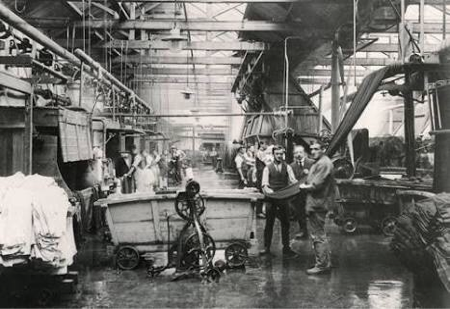Before the 1800s, fashion was an extensive and almost primitive process where one had to source materials like wool or leather, prepare and weave them into garments. However, the Industrial Revolution amplified the world of fashion by introducing new technology – like the sewing machine, textile machines,[3] ready-made clothing factories and mass production of clothes. All of this resulted in clothes becoming cheaper, easier and quicker to make. Meanwhile, localized dressmaking businesses started to emerge to cater to the middle classes, and they employed workroom employees along with garment workers,[4] who worked from home for meager wages.
These types of operations would, later on, lead to the growth of the ‘sweatshops’ that would provide the basis of modern clothing production.[5] During World War II, the trend of more functional styles and fabric restrictions led to the standardized production of clothes. Once the middle-class consumers got accustomed to it, they became more receptive to the idea of mass-produced clothing.
The fashion industry produced and ran clothes for four seasons a year up until the mid-twentieth century, and the designers would work many months in advance to predict what the customers would want. It was in the 1960s and 1970s that this method changed drastically when the young generation started to create new trends and used cheaply-made clothing as a form of personal expression. Although most fashion brands tried to find ways of keeping up with the increasing demand for affordable clothes, there was still a clear distinction between the high-end and High Street fashion. In the late 1990s and early 2000s, fast fashion became a booming industry in America with people enthusiastically partaking in consumerism.[6] Fast fashion retailers such as Zara,[7] H&M, Topshop and Primark took over high street fashion. Initially starting as small stores located in Europe, they were able to infiltrate and gain prominence in the American market by examining and replicating the looks and design elements from runway shows and top fashion houses and quickly reproducing and selling them at a fraction of a cost.[8]
